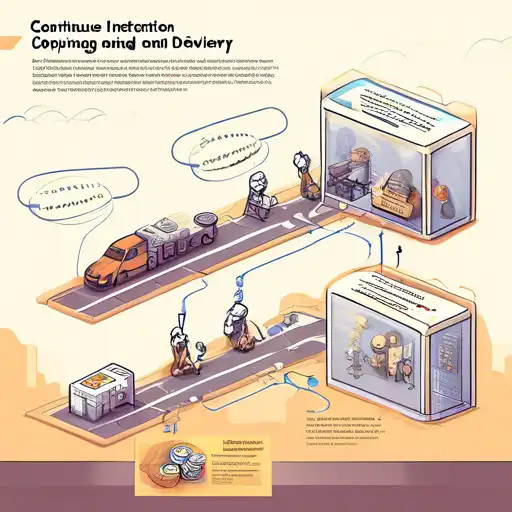What is Continuous Integration and Delivery?
Continuous Integration (CI) and Continuous Delivery (CD) are pivotal practices in the modern software development lifecycle, aimed at improving software quality and delivery speed. By integrating code changes more frequently and automating the delivery process, teams can detect errors early, reduce integration problems, and accelerate the release of new features.
The Core Principles of CI/CD
At its heart, CI/CD is about automating the software release process. Continuous Integration involves automatically building and testing code every time a team member commits changes to version control. Continuous Delivery extends this by automatically preparing code changes for a release to production, ensuring that software can be released at any time.
Benefits of Implementing CI/CD
- Faster Release Cycles: Automating the integration and delivery process significantly reduces the time between writing code and deploying it.
- Improved Code Quality: Early detection of bugs and integration issues leads to higher quality software.
- Reduced Deployment Risks: Frequent, small updates are less risky and easier to troubleshoot than large, infrequent updates.
- Enhanced Team Productivity: Automation frees developers from manual tasks, allowing them to focus on writing code.
How to Get Started with CI/CD
Implementing CI/CD requires a cultural shift towards automation and collaboration. Start by setting up a version control system, then integrate automated testing and build tools. Tools like Jenkins, Travis CI, and CircleCI can help automate the CI/CD pipeline. Remember, the goal is to make the software release process as efficient and error-free as possible.
Common Challenges and Solutions
While CI/CD offers numerous benefits, teams may face challenges such as resistance to change, tool integration issues, or maintaining test coverage. Overcoming these requires clear communication, choosing the right tools, and gradually increasing automation coverage.
For more insights into optimizing your development process, explore our guide on DevOps best practices.
Conclusion
Continuous Integration and Delivery are essential for teams looking to improve their software development process. By embracing CI/CD, organizations can achieve faster releases, higher quality software, and a more efficient workflow. Start small, focus on automation, and continuously improve your processes to reap the full benefits of CI/CD.
